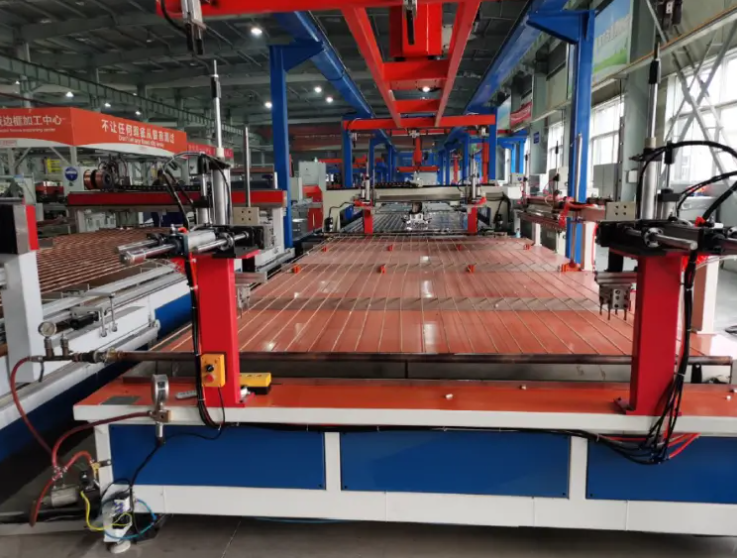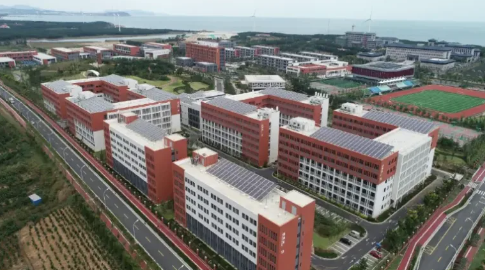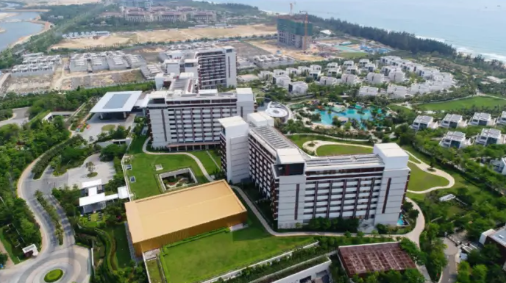
Photo: Sunrain Group
Transparency about costs makes claims more credible and helps energy modellers. For these reasons the IEA SHC Task 68 on Efficient Solar District Heating (SDH) has started a discussion about cost reduction potential of SDH systems. “We aim at performing the cost analysis based on interviews with representatives of industry and funding agencies as well as on input from research experts,” explained Luuk Beurskens of TNO, the Netherlands Organisation for Applied Scientific Research, who heads the research group on costs within Task 68. The aim is to define the cost reduction potential of SDH up to 2030.
The first input about cost saving opportunities came from the Chinese Sunrain Group, the largest collector manufacturer worldwide. Jiao Qingtai, Vice President of the Sunrain Group, listed the following four measures to cut costs in large-scale solar heat applications:
Qingtai underlined the cost saving measures in relation to his company during his presentation at the previous Task 68 meeting in November 2022. Large pre-assembled collector elements reduce cost during manufacturing and installation. According to Qingtai, the Sunrain Group already started producing 15 m2 flat plate collectors in 2019, which have been Solar Keymark tested since February 2021. The single-glass collectors are produced in a largely automated process at the headquarters of the company in Lianyungang, in the province of Jiangsu (see photo above). “We produced around 100,000 m2 of the large collector elements in 2022, mostly for projects in Tibet, but also for one project in California,” said Qingtai. In Tibet, Sunrain used the large collector elements for district heating systems at Longzi Airport as well as in the towns of Dalong and Baidi. The overall annual production capacity fo the large collector elements is 300,000 m2, according to Qingtai.

6,000 m2 of vacuum tube collectors installed on the roofs of the Weihai Vocational School provide space heating for the classroom buildings. Photo: Sunrain Group
The Vice President also introduced some district heating projects where collector fields together with heat pumps provide 100 % of the energy needs of large building complexes. One such system was commissioned in August 2019 for the Weihai Vocational School. 6,000 m2 of vacuum tube collectors are installed on the roofs of the new classroom buildings. The solar heat covers 100 % of the hot water needs in summer together with storage tanks totalling 330 m3. The collector field consists of water-filled, double-glass tubes. It is operated without pressure on the basis of a thermosiphon cycle in connection with an open, pressureless storage tank, as is typical for such systems in China.
The solar heat also contributes to the space heating needs in winter via a heat network that connects the buildings. The core space heating demand is covered by air-source heat pumps with a heat capacity of 1,500 kW. Both heat sources – solar and heat pumps – work in parallel, according to Qingtai. He sees the cost-saving potential of this hybrid system lies in the cost-competitive pressureless solar thermal system and the fact that the heat pumps do not have to work in summer at all for the hot water needs as solar energy takes over.

1,700 m2 of flat plate collectors on top of the Sofitel Sanya Leeman Resort on the holiday island of Hainan, in southern China. Photo: Sunrain Group
The tropical island of Hainan is one of the top holiday centres in China. Sunrain installed a 1,700 m2 collector field on top of the existing Sofitel Sanya Leeman Resort on the island in October 2018. Small 2 m2 collectors were utilised here. Solar heat is used to meet the hot water requirements of the 400 room hotel and spa in parallel with air-source heat pumps with a capacity of 1,250 kW.
Sunrain was responsible for the installation of the complete hot water system including solar and heat pumps. The company does not know whether there was any funding. According to Qingtai the renewable hot water system was a pure investment by the hotel owner. He describes the cost advantages of the multiple-technology energy system as follows: “The solar thermal system reduces the operating costs. The air-source heat pumps decrease the necessary installation area of the collector field and the operating cost of the electric elements that are used as an auxiliary heat source.”
Next steps in the cost assessment
Beurskens appreciated the input of Sunrain as initial indicators of cost reduction potential. As one of the first steps, he has started working on a breakdown of current CapEx and OpEx, e.g. by considering bills of material. “Together with the task experts, we want to analyse the composition of SDH system costs related to planning, collector field, storage, piping etc,” said Beurskens. The second step is to identify cost reduction potential in each of the cost categories to create a forecast for the cost development of SDH up to 2030.